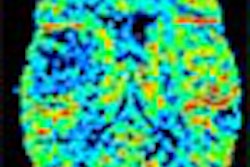VIENNA - Peer-reviewed literature and a clear medical indication are just two of the issues that physicians should consider when deciding whether to use an MRI contrast agent for off-label purposes, according to radiologists from the German Cancer Research Center in Heidelberg and the U.S. National Institutes of Health.
"Due to rapid advances in the field of MRI, new uses may substantially precede the labeling process. [Changes to labeled] indications take a lot of time to do and do not necessarily reflect the current scientific information," said Dr. Michael Knopp of the NIH during a presentation at the European Congress of Radiology on Friday.
Knopp and his co-authors designed a checklist of items that a radiologist should review before using an MR agent for a different reason other than its approved use. He suggested that the first step would be to read the package insert that outlines the approved indications.
"Unfortunately, radiologists don’t tend to read the insert. But are they doing a lot of off-label use? Yes," Knopp said. "If you read the insert, it’s remarkable to realize that the same contrast agent can have different labeling in different countries." For example, the suggested dosage for Magnevist (gadolinium-DTPA) is higher in Germany than it is in the U.S. and Japan.
Knopp and his colleagues devised the following list of requirements that should be met for off-label use:
- Substantial scientific evidence reported in peer-reviewed literature
- Physician awareness of current literature on the indication
- Manufacturer has not specifically excluded the indication
- Medical need for the indication
- Informed consent from the patient
The last two are particularly important, Knopp said. Even if the patient is successfully treated and cured as a result of the off-label use of the MR contrast medium, the physician can still be held liable if he or she has not obtained informed consent.
In order to avoid the issue of negligence, the physician also must make certain that off-label use is based on the individual requirements of the patient -- the treatment to cure or attempt to cure versus experimental treatment, according to Knopp.
"Off-label use cannot be denied if there is verifiable medical knowledge that indicates the use," he said.
Laws regulating off-label usage vary from country to country, Knopp pointed out. In Europe, the European Agency for the Evaluation of Medical Products was established in 1995 to regulate contrast agent use. In the U.S., the Food and Drug Administration is developing more specific guidelines for the use of off-label medicines.
Finally, in Germany, the ruling in a recent court case (Acyclovir Decision) stated that contrast agents in non-indicated circumstances are allowed if the researchers can prove that they are necessary for "state-of-the-art" medicine, Knopp said.
Whether an insurance payor will deem the off-label use of an MR contrast agent as acceptable also varies according to region, he added. In some cases, receiving approval in advance would be a physician’s best bet.
According to an article that Knopp co-authored in the Journal of Magnetic Resonance Imaging, "The best way to influence reimbursement is to provide the [payor] with detailed information prior to claim submission [as] there is no guarantee that any [payor] will reimburse a provider for use of a contrast agent outside of package insert indications," the paper stated (September 1999, Vol.10:3, pp.489-495).
By Shalmali Pal
AuntMinnie.com staff writer
March 2, 2001
For more coverage of the European Congress of Radiology, visit our RadCast@ECR special edition.
Copyright © 2001 AuntMinnie.com


.fFmgij6Hin.png?auto=compress%2Cformat&fit=crop&h=100&q=70&w=100)





.fFmgij6Hin.png?auto=compress%2Cformat&fit=crop&h=167&q=70&w=250)











